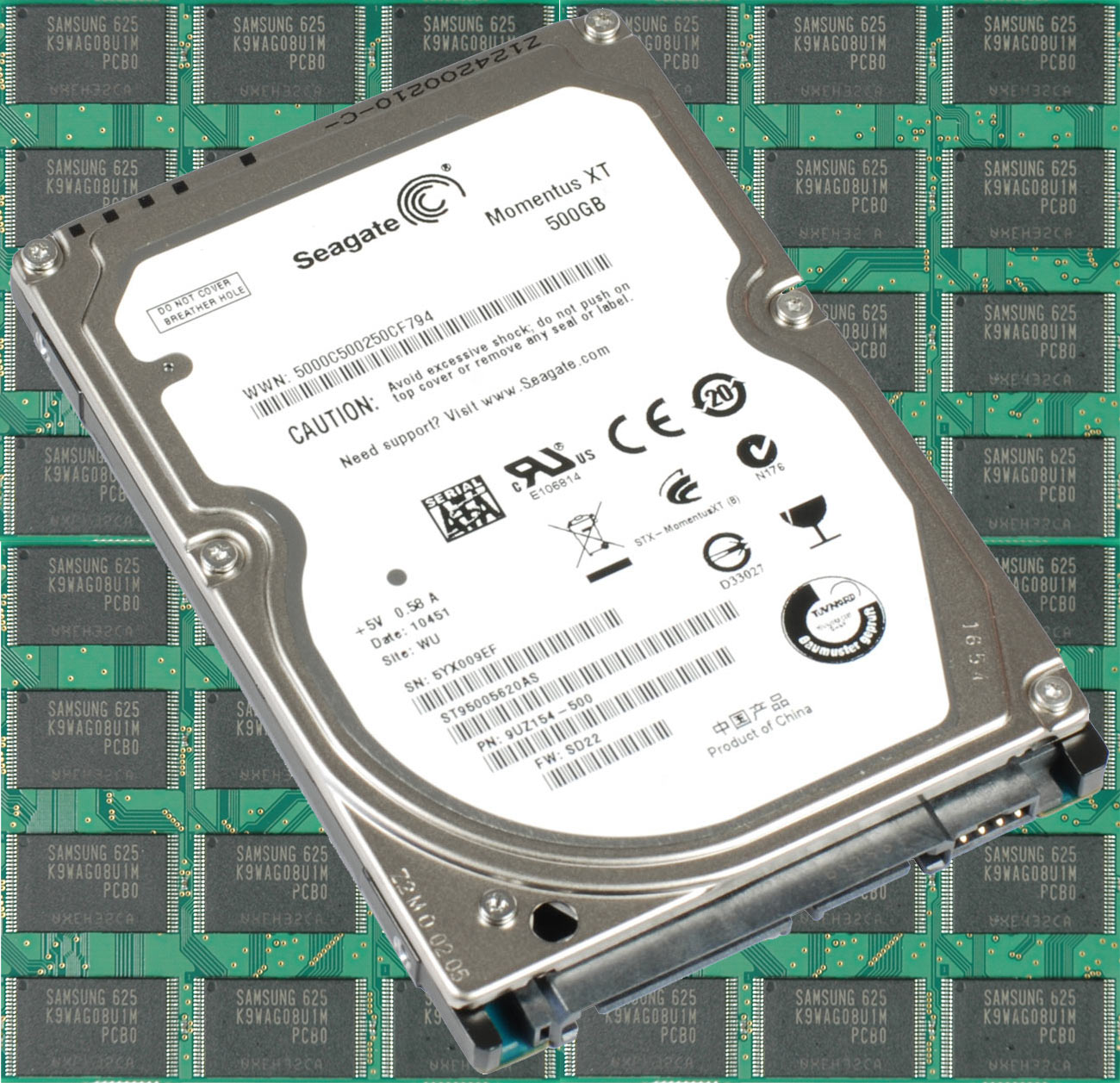Momentus XT Review: Seagate's Marriage Of The HDD And Flash Memory
Update: with more real-world testing under our belts, Seagate's Momentus XT is receiving our rare Best of Tom's award for excellent performance. This new hybrid hard drive combines up to 500GB of storage and 4GB of flash memory to maximize performance.
Seagate’s Solid State Hybrid Drive Reviewed
Article updated on May 26, 2010. For details, see bottom of this page.
The idea isn’t particularly new: why not combine a non-volatile, high-speed silicon memory with rotating storage to marry the best of both worlds, meaning maximum speed and maximum storage capacity? Hybrid hard drives (H-HDDs) arrived in 2007, and they disappeared soon after because there was hardly any real benefit. Today, Seagate unveils a new type of hybrid that is similar to the initial H-HDD concept. However, the new Momentus XT does not rely on operating system support, and hence should be more versatile.
Momentus XT is a Hard Drive!
You can combine flash memory and a physical hard drive in one of two ways: either add rotating storage to flash memory or vice versa. Seagate did the latter, and placed 4GB of flash memory onto its Momentus 7200 2.5” hard drive design. Of course, the implication is that, in a worst-case scenario, this drive will behave and perform like a conventional hard drive. This isn’t bad, but it’s important to keep in mind as we move through the benchmarks.
The Solution?
Despite all of the advantages that exist in theory, H-HDDs were frankly a disappointment when they first emerged. Therefore, Seagate has to be given credit for launching a product into this still-undefined market space. On the one side there are flash SSDs, which deliver maximum performance at significant cost. And on the other side you can get 2.5” hard drives at up to 750GB, but these can't even come close to the performance experience you get with a flash-based SSD. For the folks in the middle, a hybrid type really appears to be the way to go.
Seagate made sure that the Momentus XT is suitable for seamlessly replacing an existing hard drive design. It looks and behaves like any other 2.5” hard drive (9.5 mm z-height), it requires similar power, and it has a SATA 3Gb/s interface. We also like that Seagate adds its five-year warranty on top, which we believe is important for a new product that still has to find its way. Let’s get started.
Get Tom's Hardware's best news and in-depth reviews, straight to your inbox.
Update: Our initial review provided all of the low-level and application test results. But because of a very short testing period, we could not include the real-world testing that would allow the Momentus XT to ‘learn’ and provide performance that is more similar to an SSD. We added these results to this article today, so check out the benchmark pages on PCMark Vantage (repeated), Windows Bootup, and Application Launch testing.
Current page: Seagate’s Solid State Hybrid Drive Reviewed
Next Page HDD + Flash = Seagate Momentus XT